ROI Calculator
Do the Math
Your ROI Will Easily Exceed 10x
ImpactSIMs™ Sales Assessment predicts bad sales hires with 90% accuracy and top performers with 94% accuracy. Think for a second how much that is worth to your business.
Open positions and bad hires are the death knell of sales leaders. Hitting your number is next to impossible when you can’t fill open positions quickly with quality salespeople.
Losing production in key territories because you don’t have adequate coverage or losing key accounts and major deals because the rep you just hired isn’t up to snuff is painful and costly. But exactly how costly?
Start by Downloading our Cost of a Bad Hire Calculator spreadsheet.

Let’s walk through the total cost of a bad sales hire and ImpactSIMs™ Sales Assessment’s ROI model.
Warning: The results may shock you!
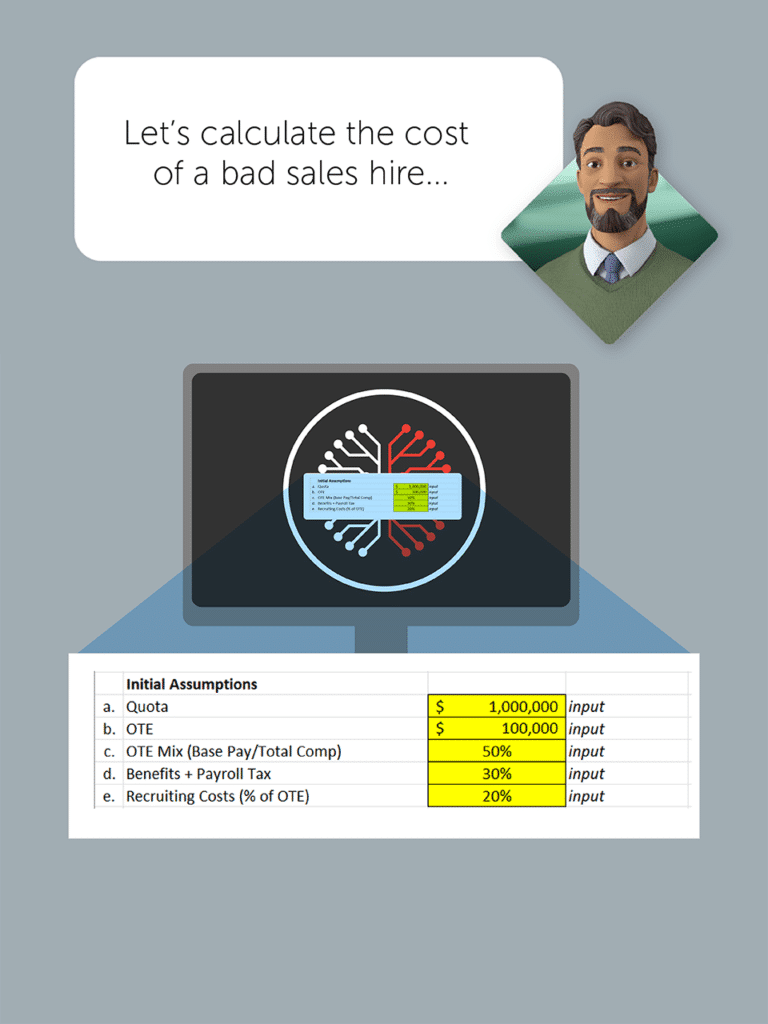
1. Getting Started on Your ROI Calculation
To calculate the cost of a bad sales hire, you will need to know the basic design of the job’s compensation package and make some assumptions based on historical averages for your company.
Start by determining the quota for the job (row a.), the on-target earnings or OTE (row b.), and the OTE mix of base salary and commission (row c.). You should also include the cost of benefits and payroll tax as a percentage of base salary (row d.), commonly estimated at 30%, and your recruiting costs as a percentage of OTE (row e.).
Note that recruiting costs can vary depending on whether you outsource or use an in-house recruiting team. If you use an in-house recruiting team, you need to consider the cost of your recruiter’s time and the costs to promote the job-on-job boards or other channels.
In the example below, let’s assume that a rep carries a $1,000,000 quota and has an OTE of $100,000. The OTE breaks down into 50% base salary and 50% commission if the plan is achieved. We’ll use the standard 30% assumption for benefits and payroll tax and assume recruiting costs of 20% of a rep’s first-year OTE.
2. Initial Assumptions
Reps receive an email and can take the simulation at their convenience on any device. We use light humor to minimize test anxiety and start with a practice simulation for candidates to gain hands-on experience. Then, they play their way through 5 parts of the simulation. Most will be done in under 20 minutes.
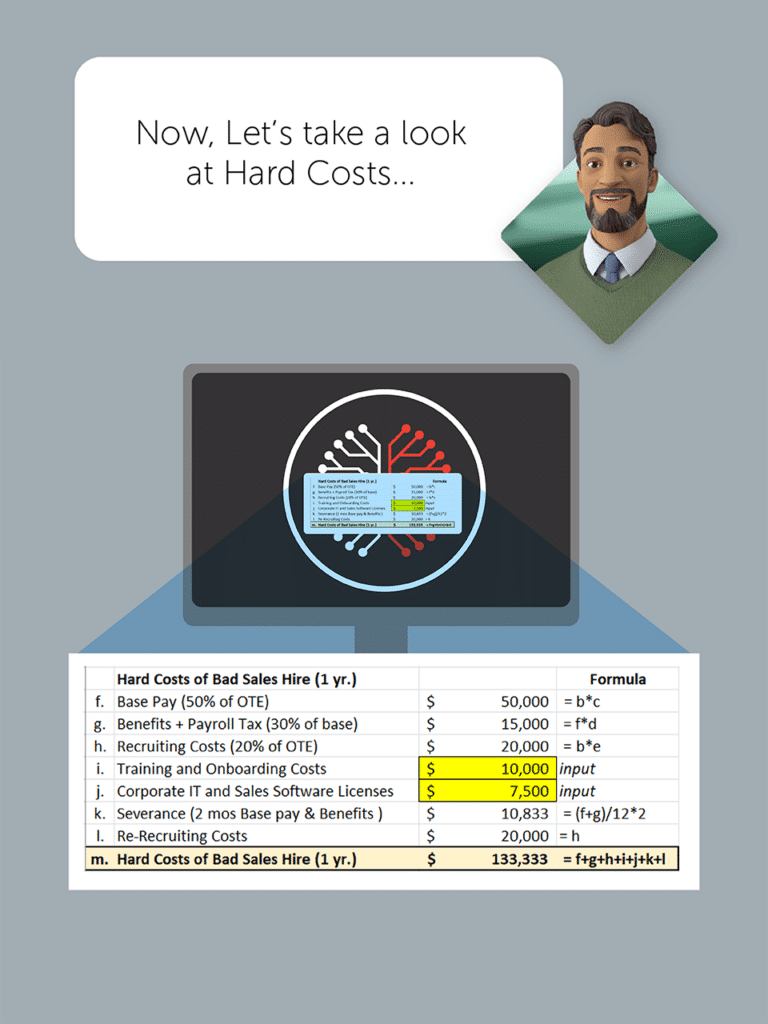
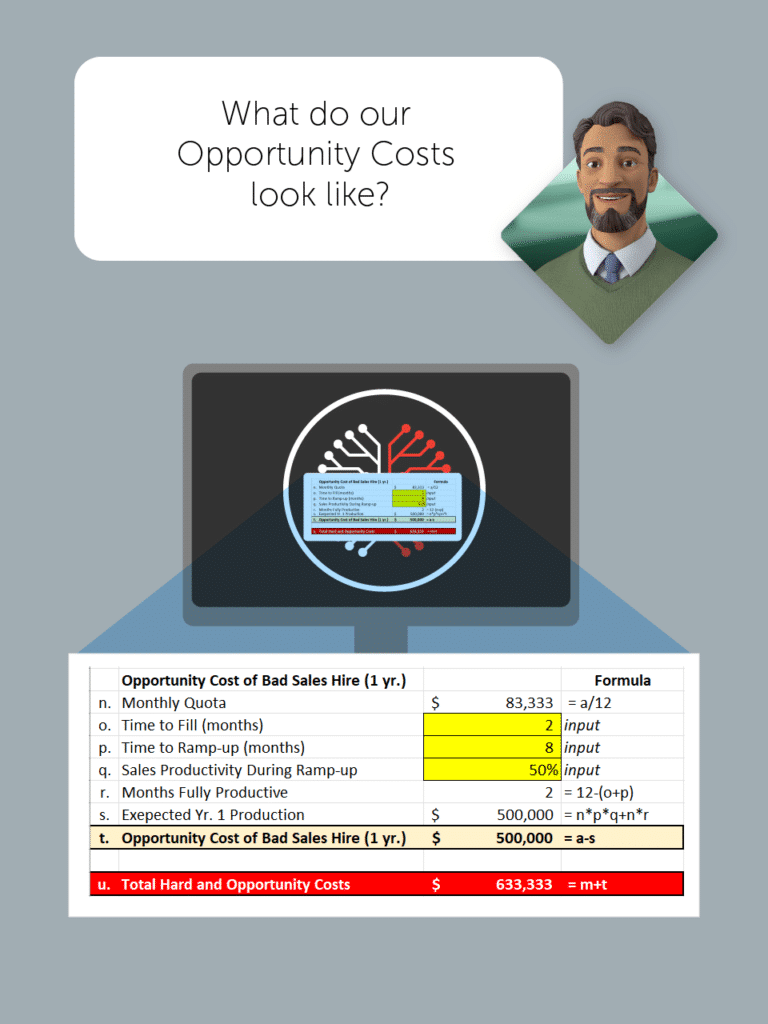
3. Hard Costs
In sales, time is money and opportunity costs reflect lost selling production while the role is unfilled and while the new hire is ramping to full production.
4. Opportunity Costs & Soft Costs
Soft and opportunity costs are more difficult to quantify, but they are real and add up significantly over time. Consider the list below:
- HR time to process the new hire and enroll them in benefit programs.
- Sales manager’s time to interview, hire, and onboard the new hire.
- IT time to set up the new hire and deploy hardware, software, and telecoms.
- Sales enablement’s time to train the new hire, either formally or informally.
- Sales managers’ time to coach the new hire, especially if they start failing.
- Disruption to customers as they adjust to the new hire in the relationship.
- HR time to terminate the employee and remove access from programs.
- IT time to remove access from systems upon termination.
- Sales managers have time to backfill on key deals and accounts while replacing the rep.
The time, effort, and distractions caused by bad hires not only cost money, but they also take a hit to morale and sap time and energy from productive activities like closing business.
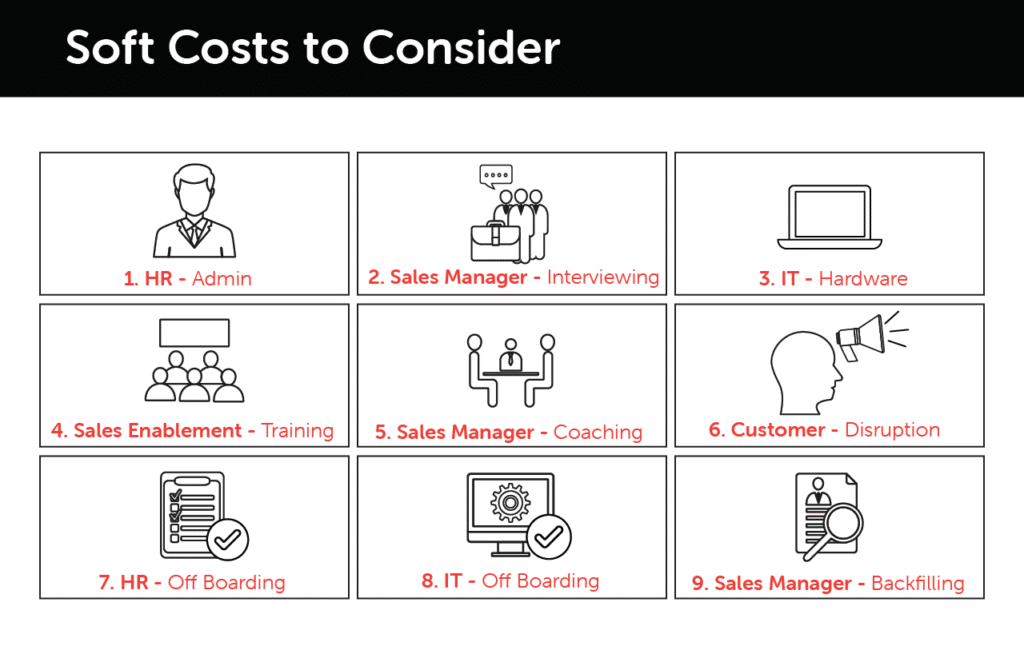
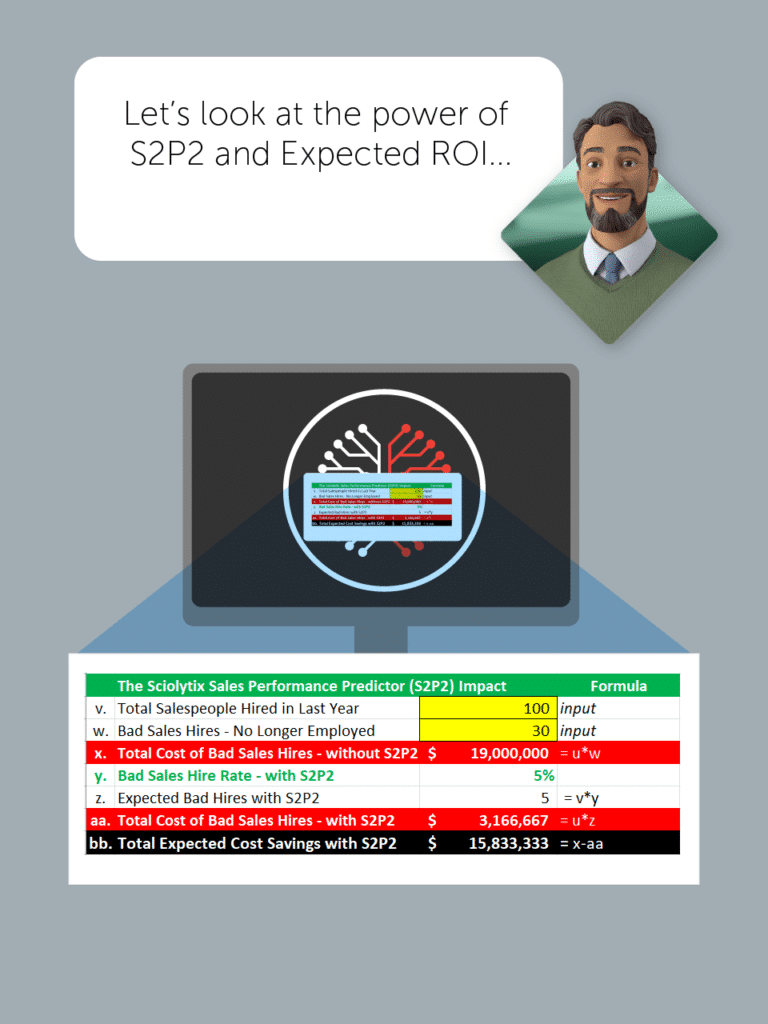
5. Expected ROI
The power of ImpactSIMs™ Sales Assessment lies in its ability to identify top salespeople with 87% accuracy and poor salespeople with 95% accuracy.
Our State of Sales Hiring Survey tells us that to hire 3 salespeople, you will need 100 applicants. The problem is that screening 100 applicants takes a lot of time, and there’s only so much you can assume by looking at a resume. You will make many guesses to reduce 100 applicants down to 25 who you will hire. There will be many strong applicants in the 75 you screen out and many poor applicants in the 25 you screen in. This is one of the big problems ImpactSIMs™ Sales Assessment solves. If all applicants play the ImpactSIMs™ Sales Assessment simulation, you will know with much greater certainty.
If we focus on reducing bad hires, look at the number of reps you hired last year and those still employed now. This will give you a good estimate of your bad hire rate. In this example, let’s assume last year you hired 100 reps (row v.) and 30 washed out (row w.). Following our example, this would have cost you $19 million (row x.).
With ImpactSIMs™ Sales Assessment, your bad hire rate will drop to 5% (row y.), or 5 out of the 100 hires (row z.). This means your total bad hire costs with ImpactSIMs™ Sales Assessment will be a little over $3 million (row aa.) and you will save nearly $16 million in bad hiring costs (row bb.). And, this doesn’t even include soft costs.
The cost for ImpactSIMs™ Sales Assessment to hire 100 reps is about $100K. Would you spend $100K to save $16 million? It’s a no-brainer!
SOURCES:
Take the guesswork out of hiring sales people
The ROI of ImpactSIMs™ Sales Assessment usually exceeds 10x. See for yourself with our ROI Calculator.
